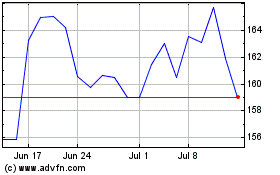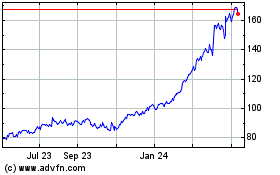GE Performance-based Navigation Flight Paths Validated at Jiuzhai Airport
May 03 2012 - 12:20PM
Business Wire
GE-designed Performance-based Navigation (PBN) flight paths were
validated last week at Jiuzhai Huanglong Airport in the Sichuan
Province of China. In this first public PBN project initiated by a
Chinese airport, the paths will be available to all approved
aircraft operators. Air China, China Eastern and Sichuan Airlines
are the first three airlines that will fly the highly-precise
flight paths.
“GE worked diligently with each stakeholder to ensure the new
flight paths were compatible and validated with each qualified
operator’s specific aircraft types in order to maximize the
benefit,” said Giovanni Spitale, general manager for GE Aviation’s
PBN Services. “The PBN paths will not only improve aircraft
performance and reliability into the region, but will help
streamline air traffic management and improve airport capacity as
well.”
Located at 11,311 feet in the Min Shan mountain range, the steep
terrain can make airport access challenging, especially during poor
weather operations. The GE-designed, highly-accurate PBN paths will
improve airport access and payload for all qualified operators,
while providing an optimized lateral and vertical guidance to the
runway. GE also harmonized the approach and departure paths to
allow for simultaneous PBN operations.
“Safety, efficiency and service reliability are top priorities
for our airspace customers,” said Mr. Zhu, deputy general manager
of the Jiuzhai airport. “The PBN paths will help us to better
ensure their needs are met, while streamlining our airspace
operations.”
PBN technology allows aircraft to fly precisely-defined flight
paths without relying on ground-based radio-navigation signals.
Required Navigation Performance (RNP) procedures, an advanced form
of PBN technology, can be designed to shorten the distance an
aircraft has to fly en-route, and to reduce fuel burn, exhaust
emissions and noise pollution in communities near airports. Because
of RNP’s precision and reliability, the technology can help air
traffic controllers reduce flight delays and alleviate air traffic
congestion.
Partnering with airlines, air navigation service providers
(ANSP), regulatory agencies and airports, GE Aviation is
implementing industry-leading technologies that enable 4D
gate-to-gate operations while alleviating flight delays and
airspace congestion. GE develops and implements technologies that
provide significant economic and environmental benefits to
airlines, airports and the communities they serve. With high
resolution geospatial earth imagery, Performance-based Navigation
(PBN) design and deployment, flight management systems (FMS) and
more, GE is building the foundation of air traffic management (ATM)
modernization. Learn more about GE's ATM solutions at:
www.geaviation.com.
GE Aviation, an operating unit of GE (NYSE: GE), is a
world-leading provider of jet engines, components and integrated
systems for commercial and military aircraft. GE Aviation has a
global service network to support these offerings. For more
information, visit us at www.ge.com/aviation.
GE (NYSE: GE) works on things that matter. The best people and
the best technologies taking on the toughest challenges. Finding
solutions in energy, health and home, transportation and finance.
Building, powering, moving and curing the world. Not just
imagining. Doing. GE works. For more information, visit the
company's website at www.ge.com.
GE Aerospace (NYSE:GE)
Historical Stock Chart
From Mar 2024 to Apr 2024

GE Aerospace (NYSE:GE)
Historical Stock Chart
From Apr 2023 to Apr 2024
